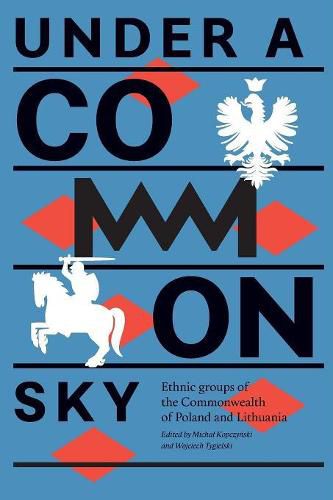Readings Newsletter
Become a Readings Member to make your shopping experience even easier.
Sign in or sign up for free!
You’re not far away from qualifying for FREE standard shipping within Australia
You’ve qualified for FREE standard shipping within Australia
The cart is loading…






From a contemporary perspective, it is easy to view the history of Poland and the Polish-Lithuanian Commonwealth from the late Middle Ages to the 19th century as a multicultural experiment that lasted over 400 years. This experiment reminds us, at least to a certain degree, of the situation of many of today’s countries in western Europe. This association comes to mind as evident; but before we follow it, we must determine whether ethnic and religious differences in those times meant the same thing as they do today.
The goal of the book is to show this diversity, to describe its individual components with an emphasis on their cultural richness, and thus to paint a portrait of the community that resulted from being long-term neighbors.The consequence of this kind of closeness can be friendship and cooperation as well as conflict.
The essays collected in this volume focus on the nations of the historic Commonwealth, their numbers, geographical location, social structure, and impact on the political life and culture of the Commonwealth. The authors write not only about Lithuanians and Ruthenians, but also about immigrants to the Commonwealth: Germans, Jews, Armenians, Tatars, Karaites, and Gypsies,
as well as Italians, Scots, and Dutch Mennonites.
$9.00 standard shipping within Australia
FREE standard shipping within Australia for orders over $100.00
Express & International shipping calculated at checkout
From a contemporary perspective, it is easy to view the history of Poland and the Polish-Lithuanian Commonwealth from the late Middle Ages to the 19th century as a multicultural experiment that lasted over 400 years. This experiment reminds us, at least to a certain degree, of the situation of many of today’s countries in western Europe. This association comes to mind as evident; but before we follow it, we must determine whether ethnic and religious differences in those times meant the same thing as they do today.
The goal of the book is to show this diversity, to describe its individual components with an emphasis on their cultural richness, and thus to paint a portrait of the community that resulted from being long-term neighbors.The consequence of this kind of closeness can be friendship and cooperation as well as conflict.
The essays collected in this volume focus on the nations of the historic Commonwealth, their numbers, geographical location, social structure, and impact on the political life and culture of the Commonwealth. The authors write not only about Lithuanians and Ruthenians, but also about immigrants to the Commonwealth: Germans, Jews, Armenians, Tatars, Karaites, and Gypsies,
as well as Italians, Scots, and Dutch Mennonites.